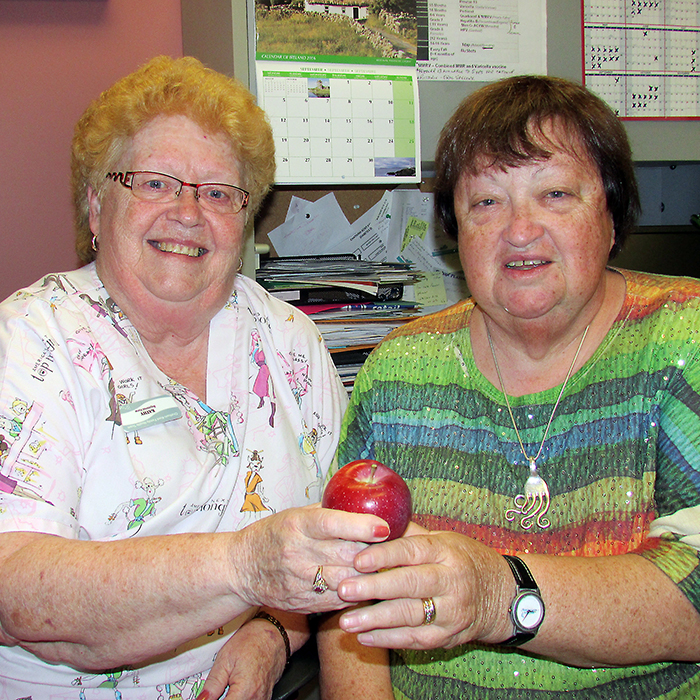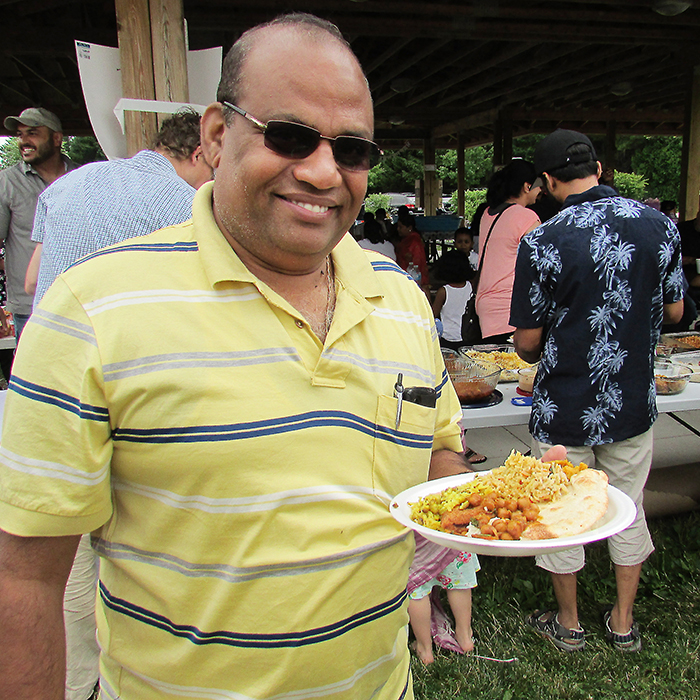
If Emer Dudley could sing and Kathy Skinner liked history, the medical community in Wallaceburg would have been deprived of two of its most dedicated members.
Instead, Dr. Dudley and registered nurse Skinner are celebrating a combined 100 years in the medical field, most of them in Wallaceburg.
The Wallaceburg Community Medical Centre duo took time recently to look back on their long careers as well as the future of health care.
Emer was living in her birthplace of County Cork, Ireland and desperately wanted to be a teacher.
“I wanted to be a National School (elementary) Teacher, but if you couldn’t sing you had to have incredibly high marks and I didn’t. I was top middle of my classes. You actually had to pass a singing exam and I couldn’t sing my way out of a paper bag. I tell people I went to medical school because it was easier,” she laughed.
Although she was a raised in a medical family, her physician mother didn’t want her to enter the profession.
“My mother did everything to discourage me,” she said. “She would wake me up at 3 a.m. when she had to see a patient just to let me know what it was like.”
Her family’s home contained her mother’s medical practice.
“The office was in the house and we had to stitch people up every Sunday because the hurling pitch
was behind our house. We would keep getting these guys coming up to the house with blood running down their head.”
“My father would occasionally answer the door and most of the guys didn’t know that it was actually my mother who was the doctor. He’d answer the door and we’d hear this thud and think ‘oh no, not again’ because my father would faint at the sight of blood.”
“The poor guy at the door would say ‘is it so bad that the doctor fainted?’ and I would just say, no he’s not the doctor and tell them to come in.”
“Once I got into medicine, I loved it. I couldn’t imagine doing anything else.”
Kathy started nursing training in 1956 at Public General Hospital in Chatham.
“I didn’t see any use in learning more history and my friend had started in nursing and was having fun so I enrolled. We lived in residence at the time.”
She was one of 21 students who graduated in 1959 but was doing practical nursing long before her three years were up.
“We were thrown in the deep end,” she said. “We had an overall supervisor but we were in charge of floors and teaching other nurses after our first year.”
After working in Chatham and the United States, she came back to Wallaceburg in 1975, working in the intensive care and emergency departments at Sydenham District Hospital until retiring 14 years ago.
She was retired for all of two weeks when she joined Dr. Dudley. “I didn’t know what to do with myself, I’d always worked.”
“She was snapped up pretty quickly,” Emer said.
“Kathy was reason I came to Wallaceburg.”
Emer had immigrated to Newfoundland and in 1983 was looking to move to Ontario when she toured a number of hospitals.
“I looked at Fort Erie but it only had 29 deliveries and Wallaceburg had 350 that year,” she said. “The Tuesday before I was going to tour some hospitals, I saw an ad in the Canadian Medical Journal for Wallaceburg and it was in driving distance so I came. I arrived at 11:45 and out of the six places I toured, Wallaceburg was by far the friendliest. Kathy greeted me with a coffee, and a place to sit before my interview. I came for a year and I’m still here. Wallaceburg had a totally different atmosphere. I was welcomed.”
Both women say there has been a de-personalization of medical care over the years and an increasing emphasis on technology as opposed to personal interaction.
“I see a lot more people released who really don’t have anyone to care for them but they have to be processed out of the hospital,” Emer said.
Kathy said young mothers are being sent home within 36 hours of delivery and complications result.
Emer said increased bureaucracy has hampered medical care throughout the system.
“Eric Hoskins (Minister of Health and Long-Term Care) has a lack of respect for grass roots medicine. The best thing he has going for him in Ontario is a good primary care system but he has a total lack of regard for what we do. He has upset people that haven’t been upset for a long time.”
She said the current family health team model now under review was a great improvement but has been plagued by a fatal flaw from the beginning.
“They made a major mistake because the capitation rate is too much and they don’t pay enough fee for service,” Emur said. “We get paid a lot for having someone rostered as a patient on our books but we get ten per cent of the $33 dollars paid through OHIP for an office visit.
“Every time a patient comes in the physician gets $3 dollars.”
She said the result is large clinics with a huge number of rostered patients but with doctors only working a couple of days per week because there isn’t a lot of money in actually seeing patients.
“We all knew it wasn’t going to last but it was better than in the mid 1990s when I was working 130 or 140 hours per week and making less than minimum wage on their formula. They just took a problem and went too far the other way.”
Kathy said she’s glad she’s grown up with technology but would find it intimidating to be starting out now without the practical knowledge of how to use it.
Emer said Kathy’s judgment is second to none.
“She is great with the little two year old “stinky poos” as she calls them. She can get shots into them before they even know what’s going on. Her breadth of experience is amazing and we rely on each other’s judgment.”
Kathy said the practical part of nursing training was an important part of her education.
“Most student nurses are very good but they don’t have the overall depth of knowledge and they’re taught more theory than practical. It’s fine to know theory but you have to know how to apply it.”
Emer still laughs at a time when the province’s idea of hiring discharge planners was in vogue.
“They were usually totally wet behind the ears and had no real practical understanding of what they were doing.”
“There was one planner who was upset that we had an elderly patient she believed should be discharged but she couldn’t get her daughters to take her home.
“I asked her if she’d even looked at the chart,” Emur said. “The patient was 107 and her daughters were 85 and 87. Of course they couldn’t take her home and take care of her. The look on this girl’s face when it finally dawned on her was priceless.”
Both Kathy and Emer say it’s difficult when long-time patients die.
“We’ve taken care of families for generations and when a patient of 30 years dies, it never gets any easier.”
With a patient roster that ranges from two-day-olds to those over a century, there is no such thing as an average day.
“We run,” Emer said. “It keeps you busy.”
She said at one time, doctors looked at a patient’s history, then did a physical examination then ordered special tests.
“Now, it’s special tests, history and an exam. Some medical learners as they call them, don’t even touch patients. It doesn’t work that way.”
“You have to touch people. You’re dealing with the most intimate things in their lives, sometimes at their absolute worse because of what’s happening to them. You have to touch them. It makes all the difference.”
“I did a lot of waitressing and I can tell you there’s a lot of similarity in being a good waitress and doing this job. A good waitress can make your evening and a bad one can make your evening miserable. In reality, you use the same skills.”






